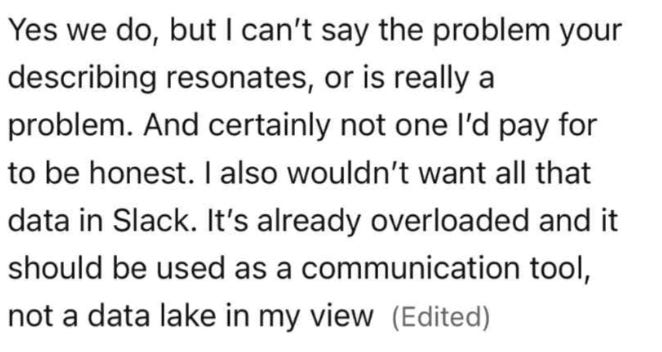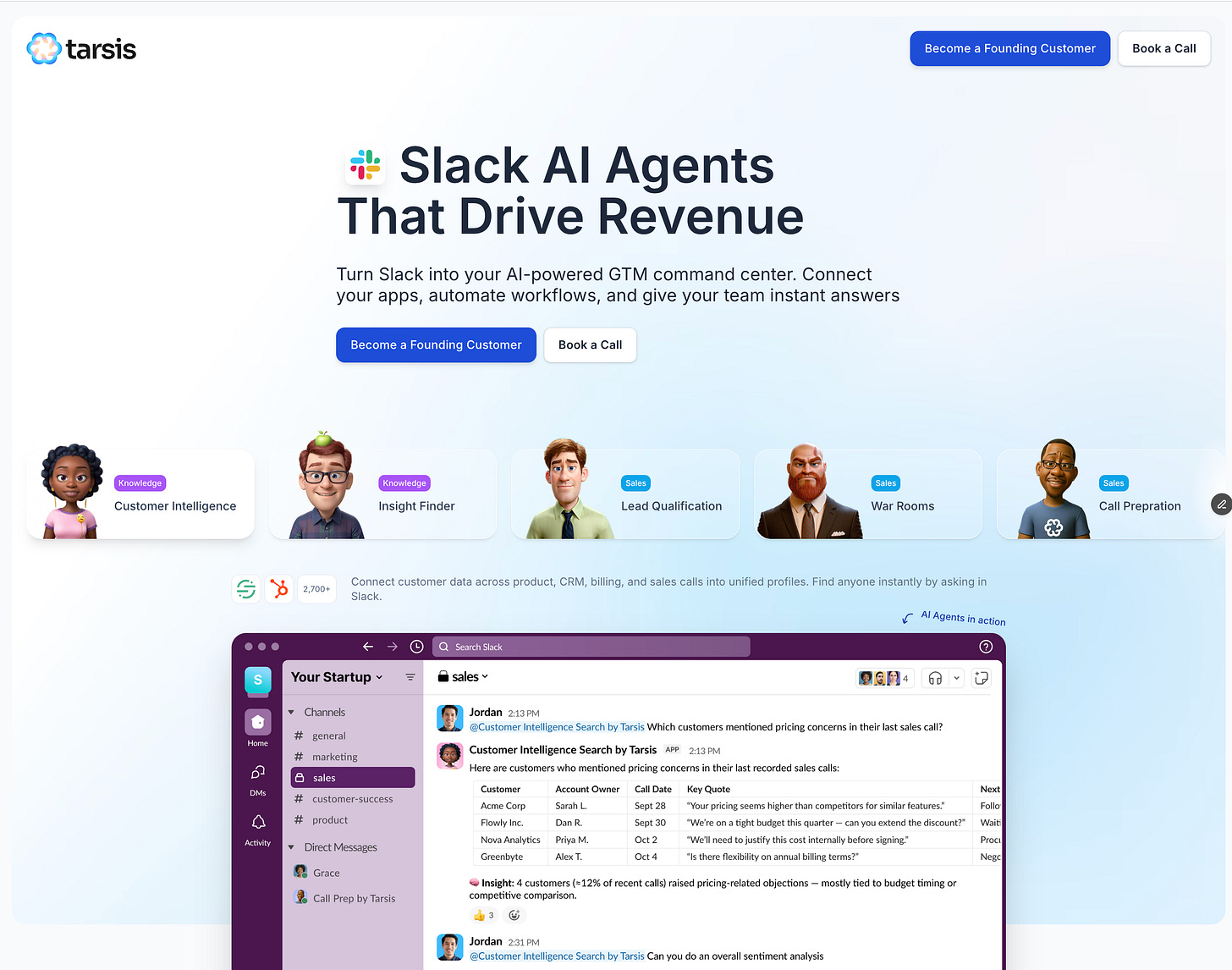Weeks 7-8: Invalidating Idea(s)
Last week, when I said I was going to try “less salesy messaging” for Tarsis and tap into my close network? Well, I did exactly that.
This week’s update isn’t about a pivot or a breakthrough. It’s about what happens when you do everything “right” (or at least what you believe is right) and still get crickets.
But here’s the thing: invalidation is still validation.
The LinkedIn Messaging Experiment
I tested a couple of different outreach approaches:
Round 1: The Salesy Approach Mentioned Tarsis, shared the link, explained the AI Slack agent concept. Got silence.
Do you use Slack for day-to-day ops?
I’m working on Tarsis.app to help SaaS consolidate scattered sales/product data with Slack-native agents that unify CRM, product, and billing data so GTM teams can act from Slack and get answers in channels. Wondering if this problem seems relevant?
Round 2: The Problem-First Approach Focused on the pain point of context-switching between tools. Without mentioning the app. Asked if they experienced this problem. Got more silence.
Quick question, do you or your clients use Slack much for your day-to-day ops?
I’m exploring an idea around helping SaaS teams get a clearer picture of their customers inside Slack — connecting product, CRM, and billing data so people can ask questions or take action right in channels. Essentially consolidating sales/product/marketing data so you can chat with it and automate tasks without leaving Slack.
Just trying to see if that kind of problem resonates with you?
And another variant of this message:
Hey {{firstName}}, quick one. Do you run sales/product comms in Slack?
I’m working on something new for GTM teams that live in Slack
Consolidating sales/product/marketing data so you can chat with it and automate tasks without leaving Slack. It’s something we built in-house for one of our customers and currently productizing for other SaaS.
Does this sound relevant?
The Numbers Don’t Lie
The Outreach:
~100 LinkedIn DMs sent
60 to GTM professionals (my supposed ideal customers). Separated into 2 outreach batches.
30+ to heads of sales and heads of product. As a 3rd outreach batch. The hypothesis was that I should target middle management, because individual contributors don’t care about process optimization and efficiency (which Tarsis is about)
The rest to my semi-close network
The Results:
5-6 negative responses
1 piece of valuable feedback
1 positive response
Most people didn’t bother responding
Essentially: low response rate and just 1 positive reply.
Feedback:
It’s valuable to get at least some perspective and legitimate feedback. As Slack could feel overwhelming, and bringing in more data into it, could make communication even harder.
The BetaList Experiment
Thinking maybe LinkedIn was just the wrong channel, I decided to test demand through BetaList. Paid $300 for a featured spot. Here’s what happened:
32 users clicked through from BetaList. Which was a robbery, as essentially I paid $10 per click.
90 total people visited the site
157 pageviews
0 demo calls booked
0 follow-up conversations
The average time on site was decent (even quite surprising for Beta list, but not sure if the data in Google Analytics was not skewed), but nobody was biting. The landing page that I’d spent a week perfecting after SaaStock? It wasn’t converting curious visitors into interested prospects.
My Conclusions
The AI Slack agent for GTM teams sounded good in theory. It solved a problem I’d observed. It leveraged trendy technology. It had a clear ICP. But it was missing that crucial element: an urgent hair-on-fire problem.
Before you can query your data in Slack, you need to have your processes built out in your CRM, your product analytics, your marketing automation, etc. You need clean data, established workflows, and teams that are already collaborating around that data. A Slack agent is an optimization play. It makes something that’s already working work better.
The frustrating part is that I genuinely believe teams will adopt these kinds of solutions. Once a team member sees it working in your Slack channels, once the pain of context-switching becomes acute enough, they’ll bite and adopt it company-wide. But it’s not 1st line of urgency or importance. At least this is my hypothesis.
This doesn’t mean the idea was invalid. It means I personally can’t validate it right now. With no early adopter excited to build this with me, no specific use case that’s urgent enough to drive adoption, and no small win to latch onto. Psychologically pushing forward with 0 signals is brutal.
Moving Forward
Tarsis is officially on ice. The landing page will stay up for a bit, but I’m not pursuing it further.
Next week, I’ll share the new direction I’m exploring. It’s based on something interesting.
Thanks for following along on this journey. The path from exit to restart isn’t linear, but at least it’s never boring.




